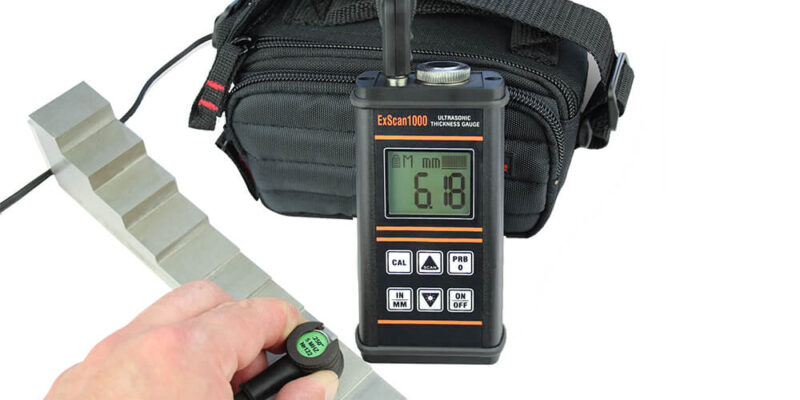
Ultrasonic Thickness Measurement (UTM) is a cornerstone of modern industrial practices, offering a precise and non-invasive method to determine the thickness of materials. This technology is essential in industries ranging from oil and gas to aerospace, where maintaining the integrity of materials is crucial for safety and performance. In this guide, we delve into how UTM achieves its precision, the challenges it overcomes, and its impact on various sectors. By mastering the nuances of UTM, professionals can enhance their operational efficiency and ensure the longevity of critical assets.
The Fundamentals of Ultrasonic Thickness Measurement
What is Ultrasonic Thickness Measurement?
Ultrasonic Thickness Measurement uses high-frequency sound waves to measure the thickness of a material from one side. It is a part of the broader ultrasonic testing field, a non-destructive evaluation method that ensures the safety and reliability of materials without damaging them. The process involves emitting ultrasonic waves into the material and measuring the time it takes for the waves to reflect back from the opposite surface or an internal defect.
Key Principles of Ultrasonic Thickness Measurement
At its core, UTM operates on the principle of sound wave reflection. An ultrasonic transducer sends sound waves through a material. These waves travel until they encounter a boundary, such as the far side of the material or an internal flaw, and reflect back to the transducer. The time taken for this echo to return, combined with the known speed of sound in the material, allows for accurate thickness measurements. This method is particularly effective for inspecting metals, composites, and certain polymers.
Components and Technologies in Ultrasonic Thickness Measurement
Transducers: Types and Applications
Transducers are the primary interface between the ultrasonic equipment and the material being tested. They convert electrical signals into mechanical vibrations and back, enabling the measurement process. There are several types of transducers used in UTM:
- Contact Transducers: Ideal for straightforward applications on accessible surfaces.
- Delay Line Transducers: Suitable for measuring thin materials or surfaces at elevated temperatures.
- Dual Element Transducers: Offer enhanced sensitivity for rough or uneven surfaces.
Choosing the right transducer depends on the material properties, surface conditions, and the measurement range required.
The Pulser/Receiver and Its Role in Measurement Precision
The pulser/receiver is a key component that generates the electrical pulse to the transducer and processes the returning echo. The design of this unit significantly impacts the sensitivity and resolution of the measurement. Features like adjustable pulse energy and damping allow for fine-tuning the system to optimize measurements across different materials and conditions.
Display Units and Data Interpretation
Modern UTM systems come with advanced display units that range from simple numerical readouts to sophisticated graphical interfaces showing A-scan or B-scan images. Interpreting this data accurately is vital for understanding material conditions like thickness variations, corrosion, or internal flaws. Training and experience play a crucial role in accurately analyzing these signals.
Applications of Ultrasonic Thickness Measurement in Industry
Ensuring Structural Integrity in the Oil and Gas Sector
In the oil and gas industry, UTM is indispensable for monitoring pipelines, storage tanks, and pressure vessels. It helps detect corrosion and erosion, which are critical for preventing leaks and ensuring safe operation. By regularly using UTM, companies can plan maintenance and replacements more effectively, avoiding costly downtime and hazardous incidents.
Quality Assurance in Aerospace Manufacturing
The aerospace sector relies on UTM to ensure the integrity of critical components like fuselage panels, engine parts, and landing gear. The precision of UTM is crucial for detecting even the smallest deviations in material thickness that could impact the performance and safety of aircraft.
Corrosion Monitoring in Marine and Offshore Engineering
Marine environments are particularly challenging due to high corrosion rates. UTM plays a vital role in assessing the condition of ship hulls, offshore platforms, and subsea pipelines. Regular thickness measurements help in planning maintenance and repairs, extending the life of these costly assets.










